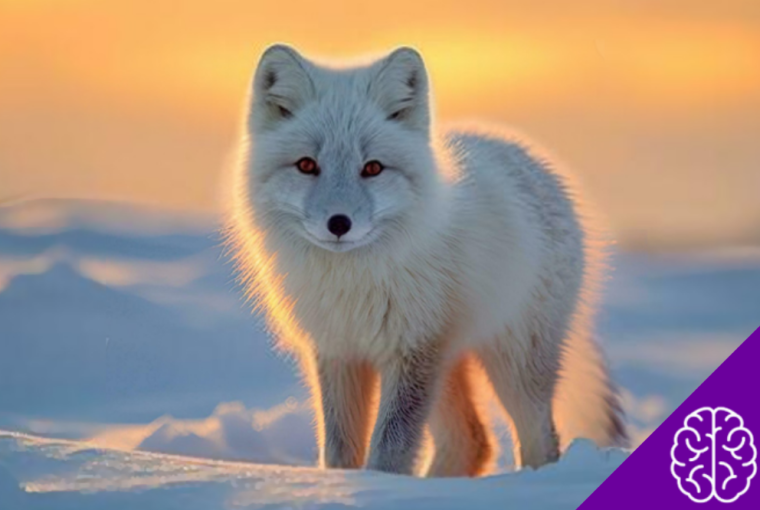Did you know there are animals that change color in the cold? That’s right! Nature is an inexhaustible source of wonders, and among its remarkable creations are animals that have the unique ability to change color according to the temperature around them.
This fascinating ability can be found in a variety of animals, including fish, reptiles, amphibians, birds, and mammals.
Therefore, in this guide from the Insight Factory website, we will dive into the fascinating world of these “ice chameleons” who amaze scientists and wildlife enthusiasts with their incredible chromatic adaptations to low temperatures!
Why do animals change color in the cold?
Color change is a unique characteristic of some animals. This ability is called cryptic coloration and serves various functions.
In some cases, the color change is used for camouflage, helping the animal blend in with the environment. In others, it is used for communication, helping the animal to communicate with others of its species.
In the winter, some animals change color to adapt to the colder climatic conditions. These species usually have lighter fur or feathers in the summer and darker in the winter.
Basically, this color change helps the animal to camouflage in the snow and ice, making it less visible to predators.
5 animals that change color in the cold
To satisfy your curiosity on the subject, we have prepared an incredible list with the main animals that change color in the winter, check it out!
Arctic Fox: the master of camouflage
The Arctic fox, a small, fluffy creature native to the Arctic regions, is renowned for its color-changing fur. In the summer, the fox’s coat is a brown or grey color, which blends perfectly with the tundra’s rocks and plants.
However, as winter approaches, their fur turns into a brilliant white, matching the snow-covered landscape. This transformation is crucial for their survival, providing camouflage from predators and aiding in hunting.
Snowshoe Hare: the winter whitecoat
Snowshoe hares, found in North America, exhibit a similar color-changing ability. During the warmer months, their fur is brown, helping them to blend in with the forest floor.
But as winter sets in, their coat changes to white, offering excellent camouflage in the snow.
Interestingly, this change is triggered by the amount of daylight and not just temperature, which aligns their camouflage with the snow season.
Ptarmigan: birds of seasonal feathers
Ptarmigans, a group of birds residing in the mountainous and polar regions, undergo a dramatic change in feather color with the seasons. In the summer, they sport brown feathers to blend with rocks and vegetation.
However, in winter, their plumage turns white, providing a stark contrast to the brown of summer and helping them evade predators in snowy conditions.
Chameleon: the temperature-responsive reptile
While chameleons are famous for changing color, most people associate this with mood rather than temperature. However, some chameleon species also change their color in response to temperature variations.
This color shift helps regulate their body temperature and can also be a mode of communication.
Cuttlefish: the ocean’s color-changing marvel
Cuttlefish, although not affected by cold temperatures, are included in this list due to their impressive color-changing abilities.
They can change color almost instantaneously, using it for camouflage, communication, and predator deterrence. Cuttlefish use a unique set of cells known as chromatophores, which expand or contract to display different colors.
Did you like to know about animals that change color in the cold?
These animals demonstrate the incredible ability of wildlife to adapt to their environments. Their color-changing capabilities are not just fascinating quirks of nature but are vital for their survival.
As climate change continues to impact habitats worldwide, understanding and preserving these unique adaptations become increasingly important.
Through studying these remarkable creatures, we gain a deeper appreciation for the complexities and intricacies of the natural world, reminding us of the urgent need to protect these extraordinary species and their habitats!


